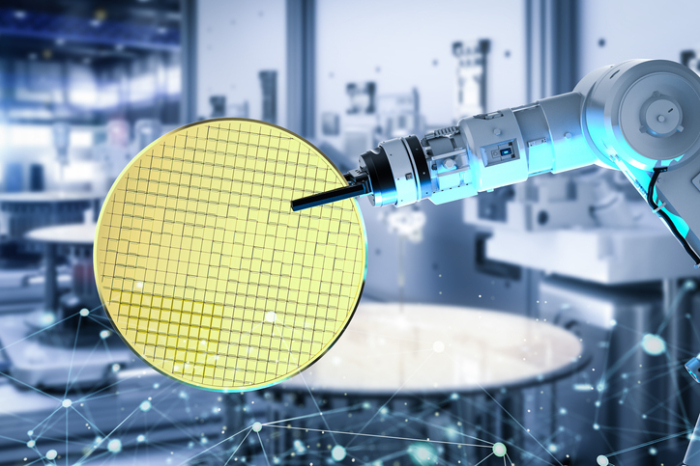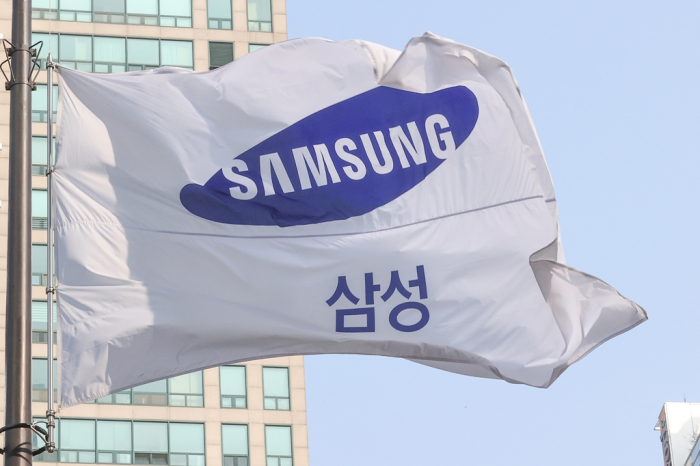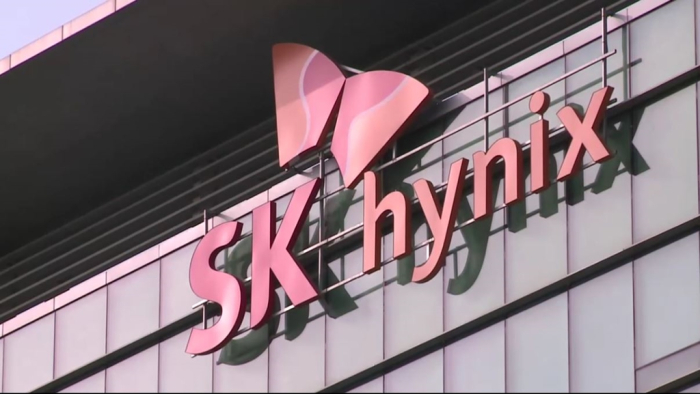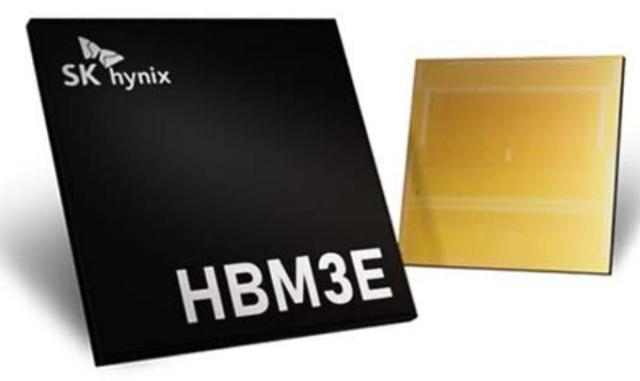Artificial intelligence creates DRAM divide between hot sellers, laggards
Analysts are more bullish on SK Hynix’s Q3 earnings than Samsung's, citing SK’s focus on HBM chips
By Oct 02, 2024 (Gmt+09:00)
LG Chem to sell water filter business to Glenwood PE for $692 million


KT&G eyes overseas M&A after rejecting activist fund's offer


Mirae Asset to be named Korea Post’s core real estate fund operator


StockX in merger talks with Naver’s online reseller Kream


Meritz backs half of ex-manager’s $210 mn hedge fund



In recent years, the big buzz across industries has been around the power of artificial intelligence, with some critics raising concerns about AI exacerbating the digital divide.
The power of AI is felt none the weaker in the semiconductor industry as AI is creating a DRAM divide for memory chipmakers between the hot sellers and laggards.
While server DRAM is booming, with its prices rising due to strong demand for AI-powered devices, the prices of DRAMs for PCs and smartphones are dropping.
The price gap between traditional DRAMs and cutting-edge new products such as high-bandwidth memory (HBM) is also widening.
According to market research firm DRAMeXchange on Wednesday, prices of server DRAM modules, such as double data rate 5 (DDR5) 64 GB RDIMM, have increased by 1-2% from the previous month.

By contrast, the contract price of PC DRAM modules such as DDR5 16 GB SO-DIMM remained unchanged. The price of some PC DRAM chips contracted last month fell by 10-22%.
While major tech companies such as Google Inc. and China’s Baidu continue to invest in servers, leading to steady server DRAM demand, sales of PC DRAM chips have stalled, industry data showed.
RISING TECH FACILITY INVESTMENT
According to Bloomberg News, 13 large global tech firms’ facility investments for fiscal 2024 stood at $231.4 billion as of Aug. 26 – a slight increase from the $230.8 billion tallied in early August. Their investments are forecast to grow 17% for fiscal 2025.
While PC manufacturers are aggressively launching AI-applied products, however, market reactions have been lukewarm.
Market research firm TrendForce recently revised down its forecast for PC DRAM price increases in the fourth quarter to flat from a hike of 3-8% it projected in September.
NEW CHIPS SOAR, OLD CHIPS DIVE
The price gap between the latest DDR5 and its older version, DDR4, is also widening.

According to Seoul-based Meritz Securities Co., the price of DDR5 DRAM modules for PCs was 29% higher than that of DDR4 in the third quarter – wider than a 26-percentage gap in the second quarter.
The widened price gap was largely due to increased DDR4 chip production by China’s ChangXin Memory Technologies (CXMT), according to industry officials.
CXMT's monthly DRAM production capacity has expanded to 160,000 sheets in terms of wafers, from 40,000 sheets in 2020. The Chinese company is currently the world’s No. 4 DRAM maker.
Its monthly production capacity is forecast to rise to 200,000 sheets by the end of this year and further to 300,000 sheets by the end of 2025.
REBALLING CHIPS
Korean memory chipmakers are also known to be contributing to the drop in DDR4 prices by selling recycled chips, known as "reballing chips."
Also known as reball chips, such semiconductors are made by recycling discarded memory modules. Although less profitable, reballing chips help boost chipmakers’ sales.
TrendForce said low-priced DDR4 reballing chips are widely available in the spot market.

EARNINGS DIVIDE BETWEEN SAMSUNG, SK HYNIX
AI chips are also creating an earnings divide between the world’s two largest memory chipmakers – Samsung Electronics Co. and SK Hynix Inc.
The market consensus of SK Hynix's third-quarter operating profit is 6.85 trillion won ($5.19 billion), down 3.5% from a consensus forecast of 7.1 trillion won a month earlier.
Samsung, meanwhile, is forecast to post an operating profit of 11.23 trillion won in the third quarter, a 17.8% cut from the consensus forecast a month earlier.
Analysts said the smaller downward adjustments for SK Hynix were because more than half of its sales revenue comes from HBM and other high-value server DRAMs.
Samsung has a relatively higher proportion of smartphone and PC DRAMs.
Samsung’s third-quarter earnings will also be weighed down by the delay in supplying the latest HBM chips to Nvidia Corp. and 1.5 trillion won in one-off charges related to employee performance bonuses, analysts said.
Write to Jeong-Soo Hwang at hjs@hankyung.com
In-Soo Nam edited this article.
-
 Korean chipmakersSK Hynix mass-produces 12-layer HBM3E for Q4 shipment
Korean chipmakersSK Hynix mass-produces 12-layer HBM3E for Q4 shipmentSep 26, 2024 (Gmt+09:00)
2 Min read -
 Korean chipmakersSamsung Electronics, TSMC tie up for HBM4 AI chip development
Korean chipmakersSamsung Electronics, TSMC tie up for HBM4 AI chip developmentSep 05, 2024 (Gmt+09:00)
3 Min read -
 Korean chipmakersSamsung, SK Hynix up the ante on HBM to enjoy AI memory boom
Korean chipmakersSamsung, SK Hynix up the ante on HBM to enjoy AI memory boomSep 04, 2024 (Gmt+09:00)
3 Min read -
 EarningsSK Hynix to supply 12-layer HBM3E to Nvidia in Q4; profit soars in Q2
EarningsSK Hynix to supply 12-layer HBM3E to Nvidia in Q4; profit soars in Q2Jul 25, 2024 (Gmt+09:00)
3 Min read -
 Korean chipmakersHBM chip war intensifies as SK Hynix hunts for Samsung talent
Korean chipmakersHBM chip war intensifies as SK Hynix hunts for Samsung talentJul 08, 2024 (Gmt+09:00)
4 Min read -
 Executive reshufflesSamsung Electronics replaces chip head amid HBM crisis
Executive reshufflesSamsung Electronics replaces chip head amid HBM crisisMay 21, 2024 (Gmt+09:00)
4 Min read -
 Korean chipmakersSK Hynix, Samsung set to benefit from explosive HBM sales growth
Korean chipmakersSK Hynix, Samsung set to benefit from explosive HBM sales growthMay 07, 2024 (Gmt+09:00)
3 Min read -
 Korean chipmakersSK Hynix’s HBM chip orders fully booked; 12-layer HBM3E in Q3: CEO
Korean chipmakersSK Hynix’s HBM chip orders fully booked; 12-layer HBM3E in Q3: CEOMay 02, 2024 (Gmt+09:00)
5 Min read


